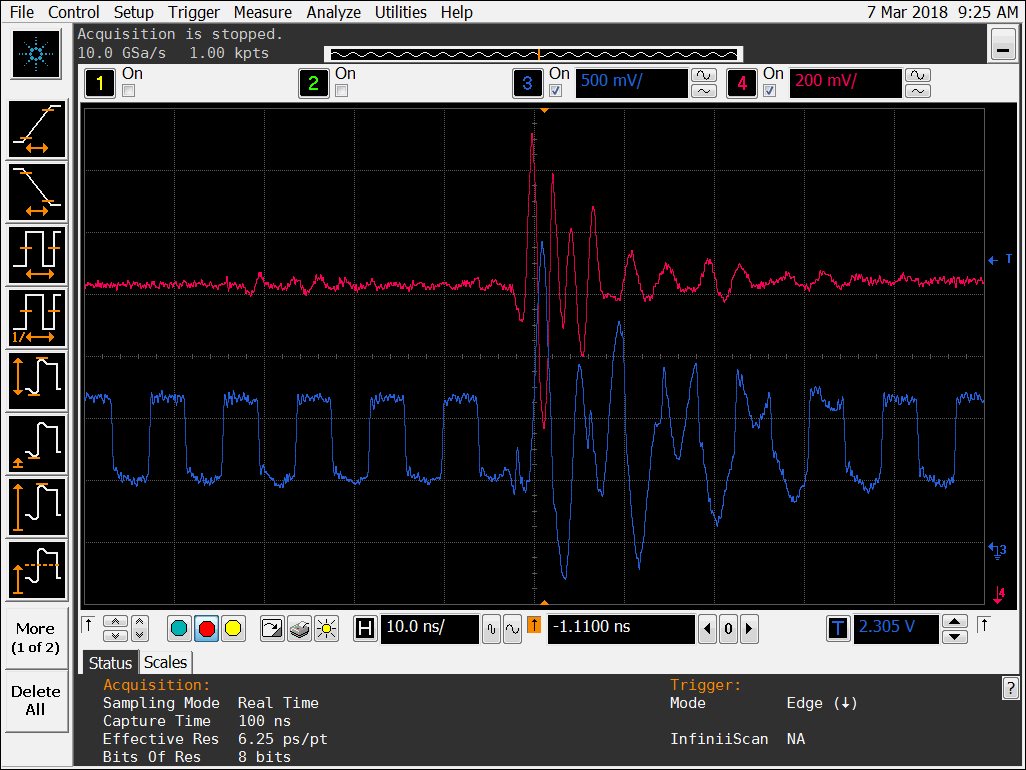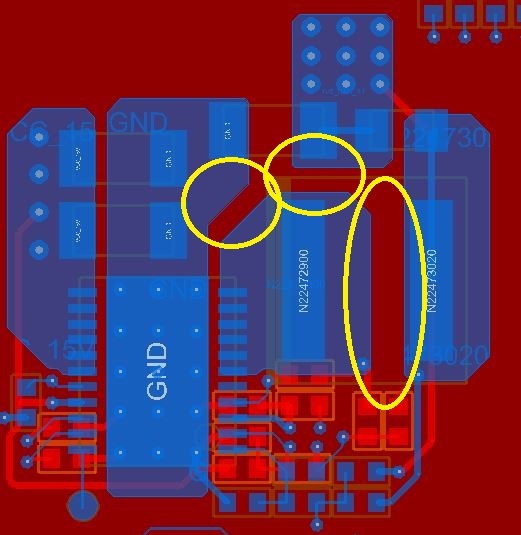Hi,
I had integrated on my design some TPS53319 configured based on WEBENCH designs.
My system is actually characterized by an high HF noise due to ringing oscillations.
I had measured these HF spikes on both input and output nodes.
This noise actually afflicted some LVDS signals and makes my system fail.
Here you can see that this noise afflicted the clock node.
This spike played as common mode noise but its amplitude bring each single ended signal out of their 1.8V rail.
Is there any way to reduce this spikes?
I tried with both snubber nets and resistor in series with Cboost but I had no practial results on that.
Thank you,
Ranieri A.




